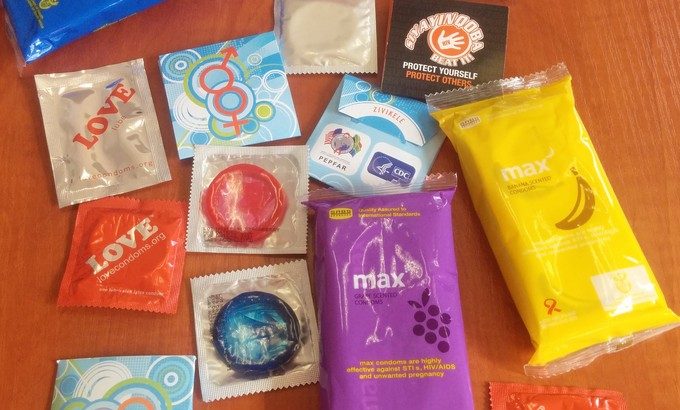África/Southáfrica/31 Julio 2016/Fuente:Groundup /Autor: Lisa Draga
Resumen: De acuerdo con Stats SA, 99.000 niñas de la escuela quedaron embarazadas en 2013. Las estadísticas también muestran que en 2013 casi el 20% de las mujeres embarazadas en el país entre las edades de 15 y 24 eran seropositivas. Estas estadísticas alarmantes muestran la apremiante necesidad de abordar la susceptibilidad de los jóvenes estudiantes son a contraer el VIH. La semana pasada, los jóvenes activistas interrumpieron la conferencia sobre el SIDA de Durban. Ministro Aaron Motsoaledi estaba a punto de introducir un orador cuando los alumnos se levantaron de sus asientos, el canto y exigiendo que el gobierno vele por la distribución gratuita de preservativos en las escuelas.
If we are to curb high rates of HIV infections and pregnancy in schools, condoms must be accessible
According to Stats SA, 99,000 school girls fell pregnant in 2013. Statistics also show that in 2013 almost 20% of pregnant women in the country between the ages of 15 and 24 were HIV-positive. These shocking statistics display the pressing need to address how susceptible young learners are to contracting HIV. Last week, young activists disrupted the Durban Aids Conference. Minister Aaron Motsoaledi was on the verge of introducing a speaker when learners rose from their seats, singing and demanding that government ensure the distribution of free condoms in schools. The Minister reportedly responded, «No, no, no – this session is not about this.»
The question around addressing the high rates of HIV and learner pregnancy in South Africa was recently put to government by the UN Committee on the Rights of the Child. In response, the government lauded its soon to be introduced Department of Basic Education Draft Policy on HIV, STIs and TB as a mechanism for positive change.
While the potential of the proposed policy is significant, it suffers from a fundamental flaw: government’s failure to frame the policy in a way that recognises that effective access to condoms in schools is a basic human right.
The Draft Policy does not make clear if all learners will have access to condoms in schools or how condoms are to be distributed. This is important, as attempts to restrict the age at which learners can access condoms may be detrimental to combatting the spread of HIV.
According to a 2012 National Survey on HIV, 37.5% of all learners reported having had sex, with 12.6% indicating that their first sexual encounter occurred before age 14.
Young females are vulnerable to sexual assault and the unequal power relations between genders. They are especially in need of access to protection.
The manner in which condoms will be distributed at schools will have a significant effect on learner uptake. The Draft Policy contemplates that certain learners could make use of mobile clinics where a nurse administers condoms. But research shows the reluctance of learners to obtain condoms when issued by an authority figure. The Draft Policy should be amended to allow learners easy and discreet access without having to interact with an intermediary to obtain condoms. Unmonitored condom dispensers placed in male and female bathrooms could make a significant impact.
Many object to condom distribution policies, claiming they cause learners to be more sexually active or enable learners, who would not otherwise consider becoming sexually active, to engage in sex earlier than they would have.
There are no studies to support these claims and plenty of studies to prove the opposite. Comparative research shows that condom availability programmes actually increased learners’ use of condoms when they were already engaging in sexual intercourse.
Adults often lecture children about being responsible. But parents, teachers and those elected to make vital decisions for our nation and our children also bear much responsibility. They are responsible for examining the research, engaging with the studies, digesting the statistics – however unpalatable they may be – and moving beyond morality rhetoric.
If we are to curb the high rates of HIV infections and pregnancy amongst learners in South Africa, condoms must be distributed in schools. And this must be done in an easy, discreet and accessible way. This should be coupled with comprehensive, age-appropriate sex education. Access to condoms in schools is learners’ right and ensuring this is our responsibility.
Lisa Eaves Draga is an attorney at the Equal Education Law Centre.
Fuente de la noticia: http://www.groundup.org.za/article/condoms-schools-its-human-right/
Fuente de la imagen: http://www.groundup.org.za/media/_versions/images/photographers/Nathan%20Geffen/Condoms_large.jpg







 Users Today : 102
Users Today : 102 Total Users : 35460008
Total Users : 35460008 Views Today : 147
Views Today : 147 Total views : 3418612
Total views : 3418612